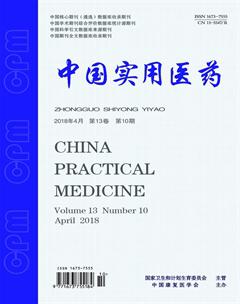加温湿化高流量鼻导管通气治疗重症肺炎的临床疗效观察与研究
蔡燕鸿 曾振华 曹晓燕


【摘要】 目的 探讨加温湿化高流量鼻导管通气(HHFNC)治疗重症肺炎的临床疗效与实用价值。方法 60例重症肺炎患儿, 随机分为治疗组与对照组, 每组30例, 在研究过程中, 治疗组无患儿退出, 对照组因各种原因退出3例患儿, 研究结束时对照组27例, 治疗组30例。治疗组按儿科常规护理治疗, 同时给予加温湿化高流量鼻导管通气治疗;对照组按儿科常规护理治疗, 并予常规氧疗。比较两组的治疗效果。结果 治疗前两组小儿危重病例评分法(PCIS)评分及氧分压比较差异均无统计学意义(P>0.05);治疗后12~24 h治疗组氧分压高于对照组, 差异具有统计学意义(P<0.05)。治疗后12~24 h, 治疗组总有效率80.0%高于对照组的55.6%, 差异具有统计学意义(P<0.05)。治疗组呼吸困难缓解天数、心率恢复正常天数及住院治疗天数均短于对照组, 差异均具有统计学意义(P<0.05)。结论 加温湿化高流量鼻导管通气治疗重症肺炎的临床疗效显著, 有舒适、安全、易于操作、疗效显著四大实用价值, 值得临床推广。
【关键词】 加温湿化高流量鼻导管通气;重症肺炎;临床疗效
DOI:10.14163/j.cnki.11-5547/r.2018.10.002
【Abstract】 Objective To discuss the clinical efficacy and practical value of humidified high flow nasal cannula (HHFNC) in the treatment of severe pneumonia. Methods A total of 60 severe pneumonia children were randomly divided into treatment group and control group, with 30 cases in each group. During the study, no children were withdrawn from the treatment group, and 3 children withdrew from the control group for various reasons. There were 27 cases in the control group and 30 cases in the treatment group at the end of the study. The treatment group received conventional nursing and humidified high flow nasal cannula for treatment, and the control group received conventional nursing and conventional oxygen therapy. The treatment effect in two groups was compared. Results Before treatment, both groups had no statistically significant difference in pediatric critical illness scale (PCIS) score and oxygen partial pressure (P>0.05). After 12~24 h of treatment, the treatment group had higher oxygen partial pressure than the control group, and the difference was statistically significant (P<0.05). After 12~24 h of treatment, the treatment group had higher total effective rate as 80.0% than 55.6% in the control group, and the difference was statistically significant (P<0.05). The treatment group had shorter dyspnea remission time, heart rate back to normal time and hospitalization time than the control group, and their difference was statistically significant (P<0.05). Conclusion Humidified high flow nasal cannula shows remarkable clinical efficacy in treating severe pneumonia with four practical vale of comfort, safety, easy operation and remarkable efficacy, and it is worthy of clinical promotion.
【Key words】 Humidified high flow nasal cannula; Severe pneumonia; Clinical efficacy
小兒肺炎为儿科的常见病、多发病, 病死率居我国儿科住院疾病首位, 是5岁以下儿童死亡的主要原因, 死亡病例主要为重症肺炎[1], 呼吸衰竭是重症肺炎患儿死亡的主要原因[2], 故氧疗成为治疗重症肺炎重要环节。氧疗可通过有创与无创呼吸支持实现, 本研究以无创氧疗为研究方向。加温湿化高流量鼻导管通气是本次研究的主要研究方式, 通过临床实际运用分析其在治疗重症肺炎中的疗效及实用性。现报告如下。

